Post by Alyssa Showalter, undergraduate in Psychology and Social Science pursuing two minors in Interdisciplinary Neuroscience and Sociology at Portland State University.
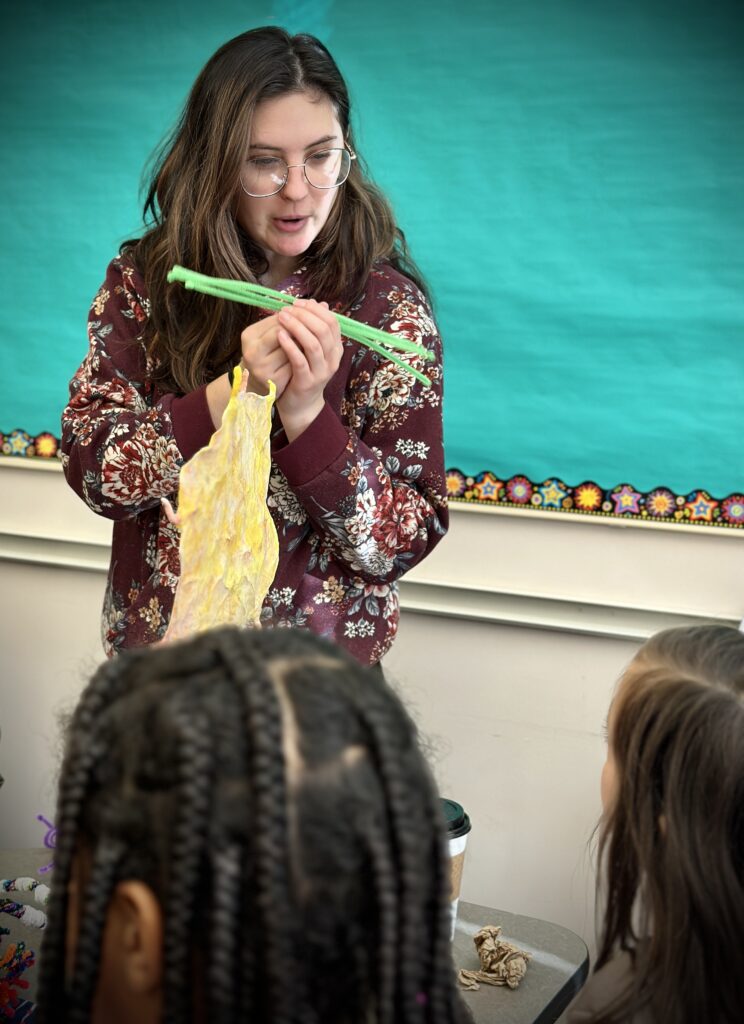
Towards the end of last summer I was cramming in all my trips to various cities before fall term started at Portland State. My last trip ended with me catching COVID. I felt so tired, as if my brain couldn’t comprehend too much without wiping me out.
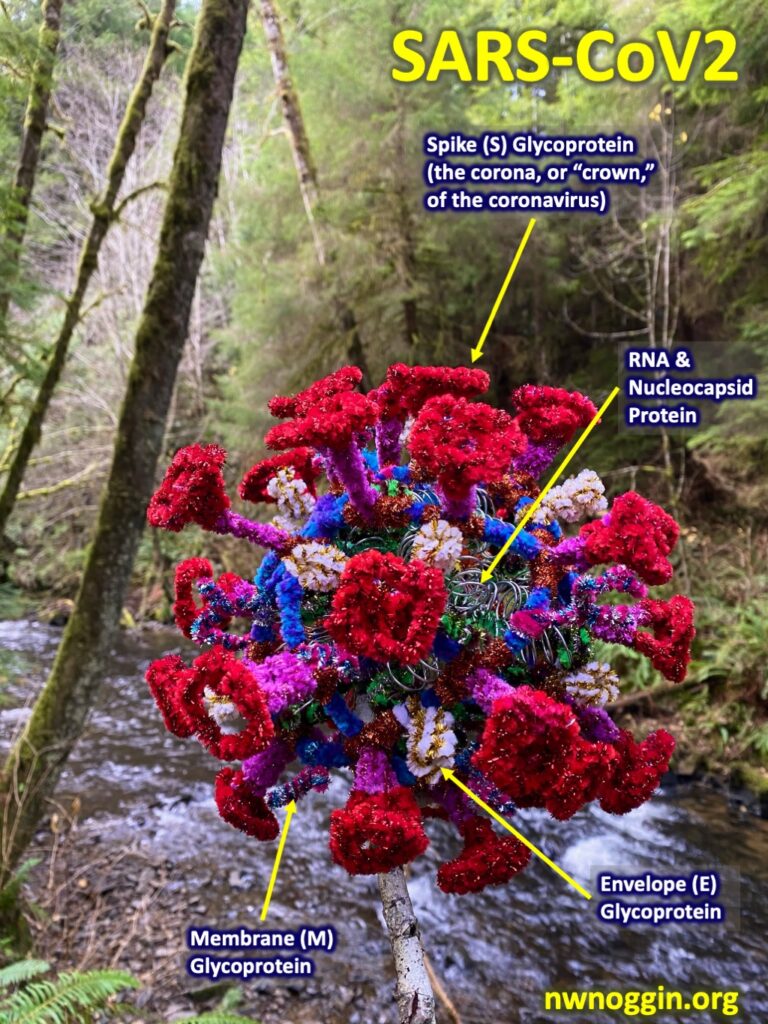
Once I got better and was able to attend in-person classes I thought about how we don’t talk about COVID too much anymore even though it’s still around us. Then as I started visiting schools for outreach I often wondered about how COVID has impacted students and teachers in K-12 classrooms.
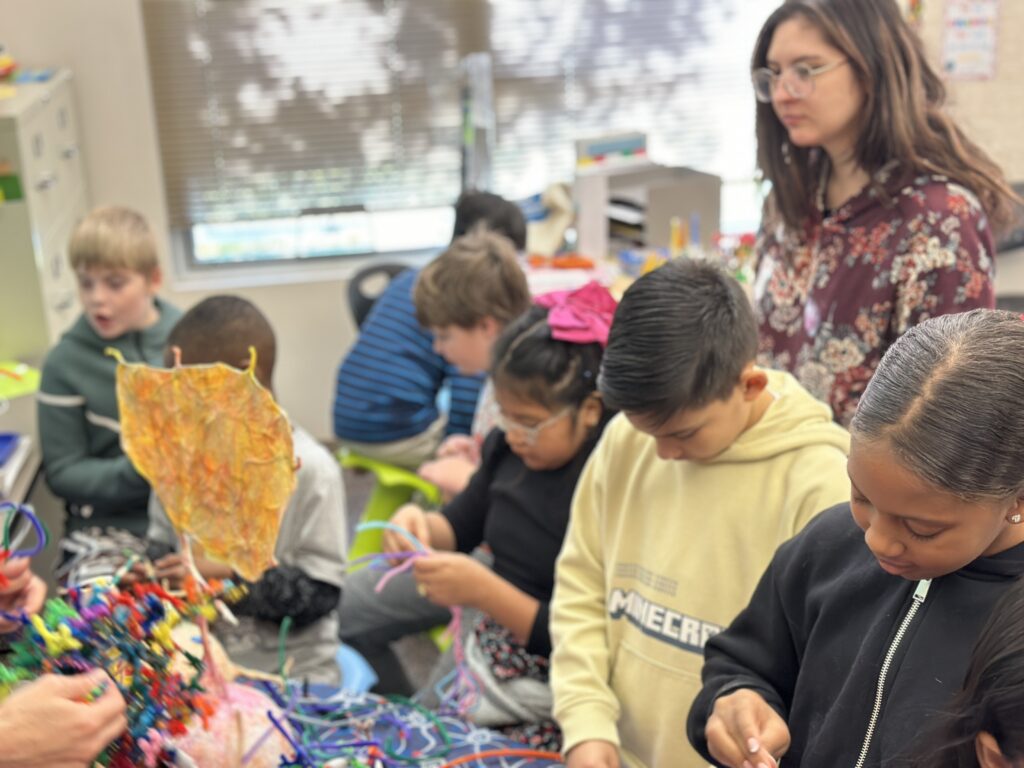
What happens in the brain when COVID takes over? What’s going on socially and physically as COVID-19 continues to impact us and our schools?
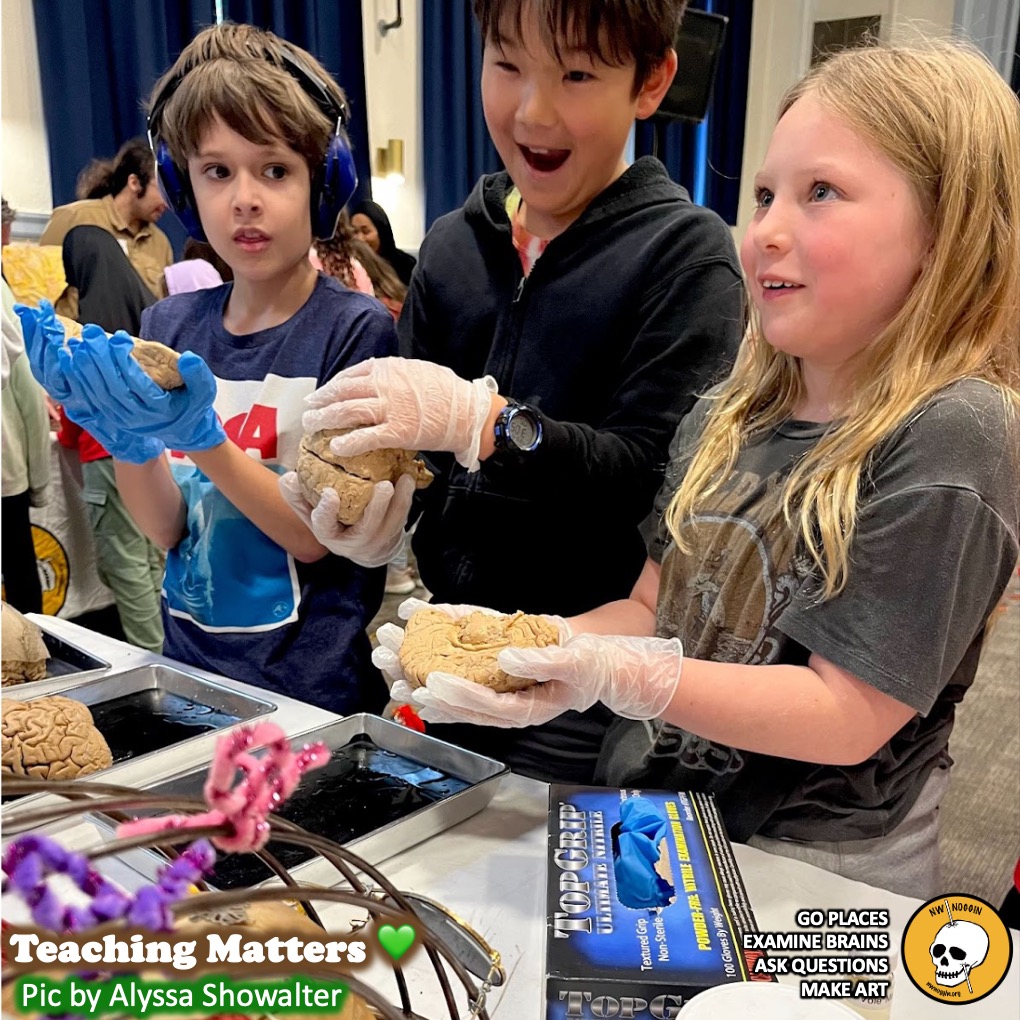
What is COVID-19?
COVID-19 is an airborne infectious disease that is caused by the SARS-CoV-2 influenza virus.
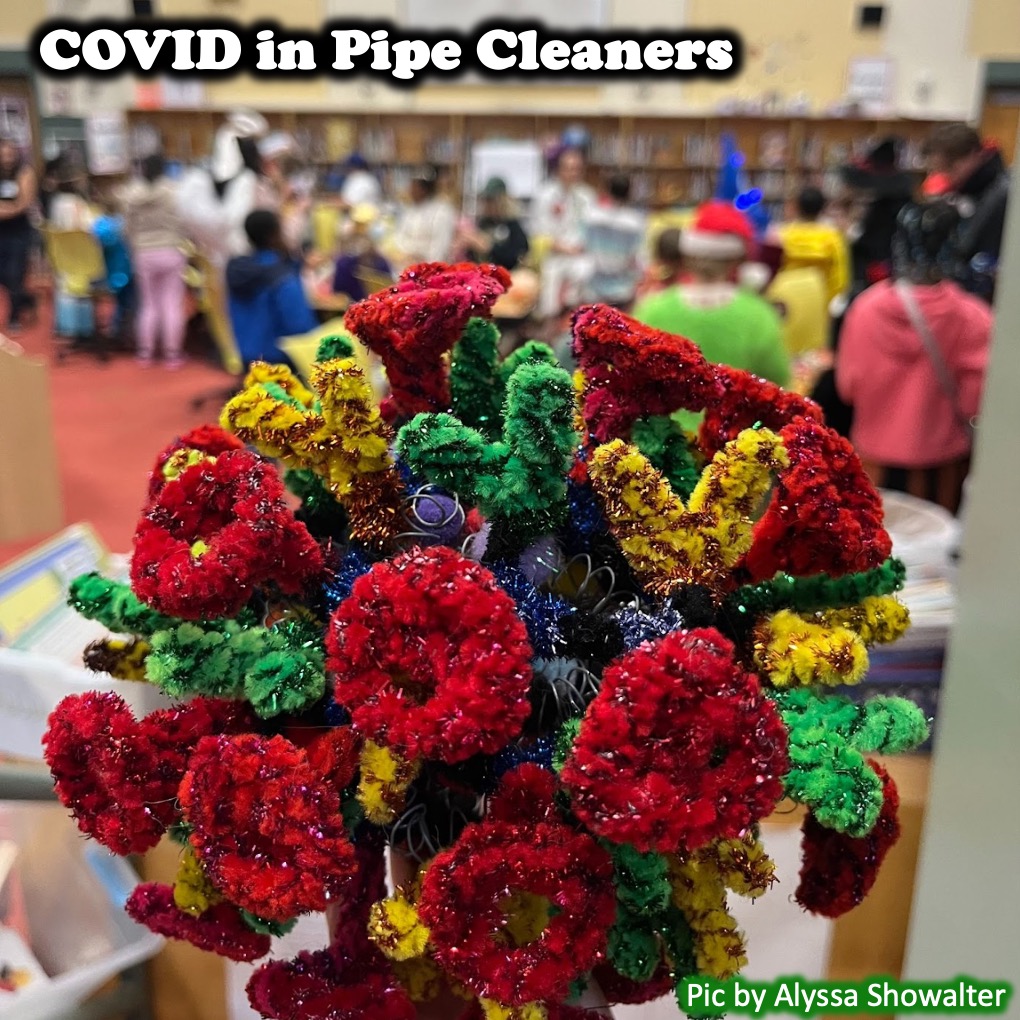
MAKE YOUR OWN PIPE CLEANER SARS-CoV-2: Crafting Coronavirus
SARS-CoV-2 is a coronavirus, producing symptoms like those of the common cold, including cough, fever, and shortness of breath. More severe symptoms are difficulty breathing, nausea, vomiting, diarrhea and muscle aches. Some experience a loss of smell and taste. The virus enters the body through the eyes, mouth or nose, and often causes a persistent and contagious cough.
LEARN MORE: What Is COVID-19?
LEARN MORE: Features, Evaluation, and Treatment of Coronavirus (COVID-19)
LEARN MORE: COVID-19 Topics
LEARN MORE: Does common cold coronavirus infection protect against severe SARS-CoV-2 disease?
LEARN MORE: Corona viruses: reaching far beyond the common cold
LEARN MORE: Approach to post COVID-19 persistent cough: A narrative review
In early days of the pandemic, the disease proved debilitating and too often fatal.

LEARN MORE: Provisional United States COVID-19 Mortality Surveillance
Thankfully, vaccinations developed with significant public investment saved millions of lives. A study from 2022 reported that “vaccinations prevented 14·4 million deaths from COVID-19 in 185 countries and territories between Dec 8, 2020, and Dec 8, 2021!”

LEARN MORE: NIH’s COVID-19 Response
LEARN MORE: What is the National Institutes of Health (NIH)?
In U.S. states with pandemic restrictions (including requirements for masking and vaccination) there were significantly fewer deaths than in states with fewer restrictions. From a recent article: “If all states had imposed restrictions similar to those used in the 10 most restrictive states, excess deaths would have been an estimated 10% to 21% lower than the 1.18 million that actually occurred…”
Additional research finds significantly higher death rates – and lower vaccination rates – in “red” states that failed to encourage evidence-based guidance in public health. Research informed public policy clearly saves lives.

LEARN MORE: The politics of COVID-19: Differences between U.S. red and blue states in COVID-19 regulations and deaths
LEARN MORE: US State Restrictions and Excess COVID-19 Pandemic Deaths
LEARN MORE: The Changing Political Geography of COVID-19 Over the Last Two Years (from 2022)
LEARN MORE: Partisan Control of U.S. State Governments: Politics as a Social Determinant of Infant Health
LEARN MORE: Global impact of the first year of COVID-19 vaccination
LEARN MORE: Analysis of National Institutes of Health Funding for the COVID-19 Pandemic
What does COVID do to the brain?
COVID can cause unpleasant respiratory and gastrointestinal symptoms which can then lead to neuropsychiatric symptoms in the brain. Some symptoms in patients are anxiety, depression, psychosis, seizures and suicidal tendencies. However, one research article stated that these symptoms sometimes “present before, during and after respiratory symptoms; suggesting independent brain damage.” In other words, COVID may cause damage by other mechanisms too.
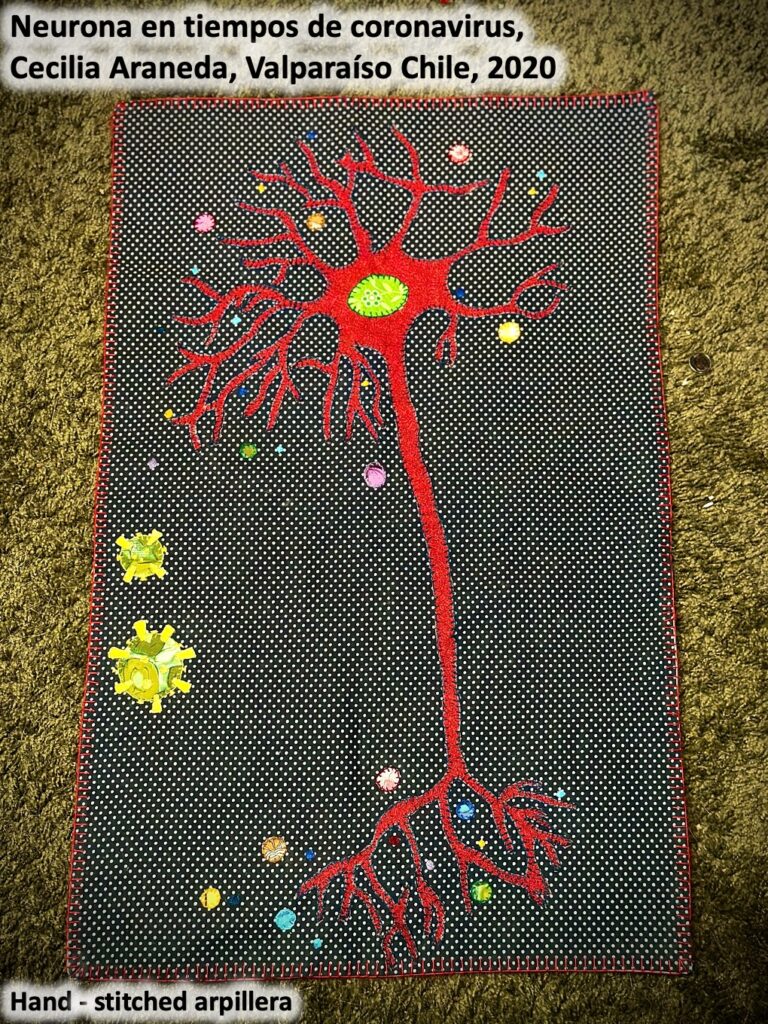
LEARN MORE: Sewing Memories, & Brains
Short term and long term neuropsychiatric symptoms are likely due to neuroinflammation and hypoxic injury (i.e., injuries from too little oxygen supplied to the brain). If the brainstem is involved it may be the reason for “autonomic abnormalities and anxiety.” In severe COVID-19 cases the increase of “quinolinic acid results in higher glutamate and upregulation of NMDA receptors possibly inducing altered learning, memory, neuroplasticity, hallucinations, and nightmares.” SARS-CoV-2 can also cause inflammation in the brain leading to “blunted monoamine neurotransmission, anhedonia, negative cognitive, psychomotor and neuro-vegetative symptoms, depression and suicidal behavior.”

A very recent article (fall, 2024) noted how the surface spike protein from the coronavirus appears to linger at “brain borders” (between the skull and the meninges (the layers that surround the brain and spinal cord) and the meninges and the brain), leading to persistent inflammation and neurodegeneration, particularly in those suffering from long COVID.
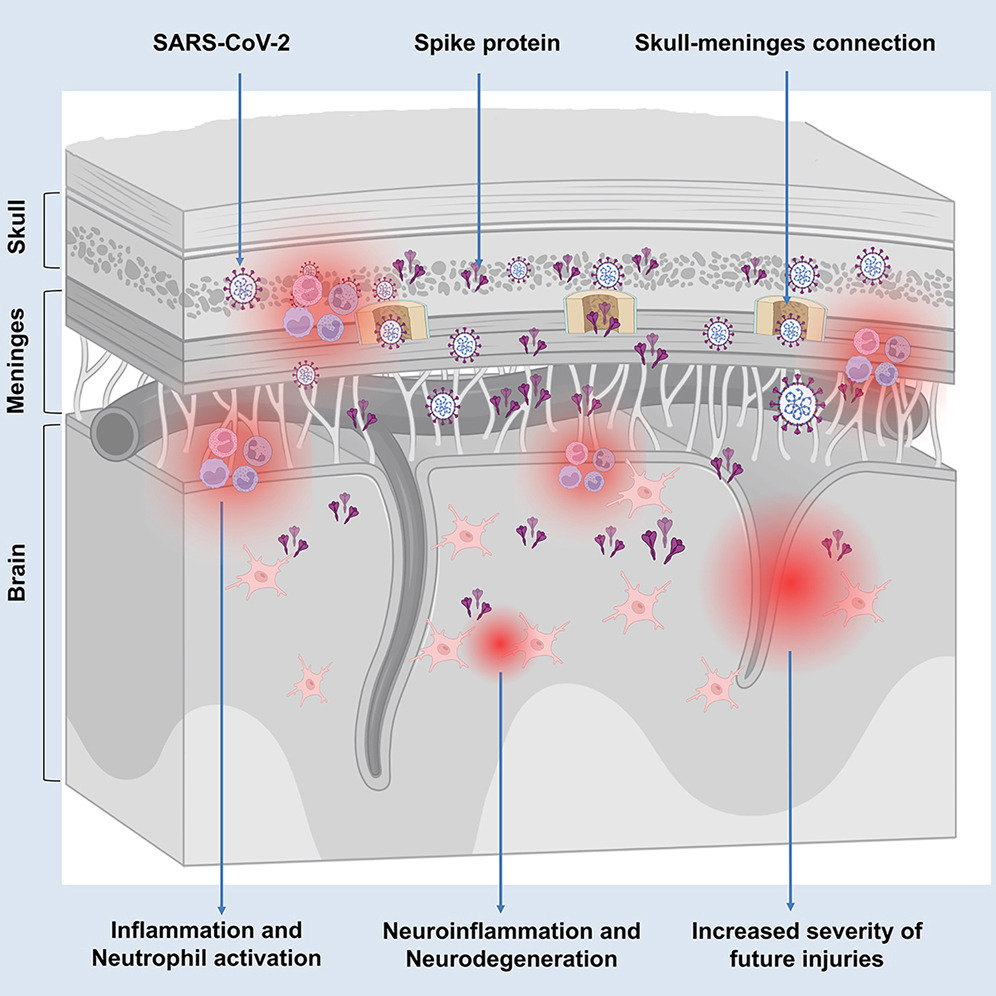
LEARN MORE: How COVID-19 Affects the Brain
LEARN MORE: The possible role of quinolinic acid as a predictive marker in patients with SARS-CoV-2
LEARN MORE: Long COVID Research and Resources (NIH)
Early strains of the virus could powerfully degrade our sense of smell. A complete inability to smell is known as anosmia. People often reported losing both smell and taste, although since smell is so important to our experience of flavor, anosmia alone might lead to far less tasty meals!
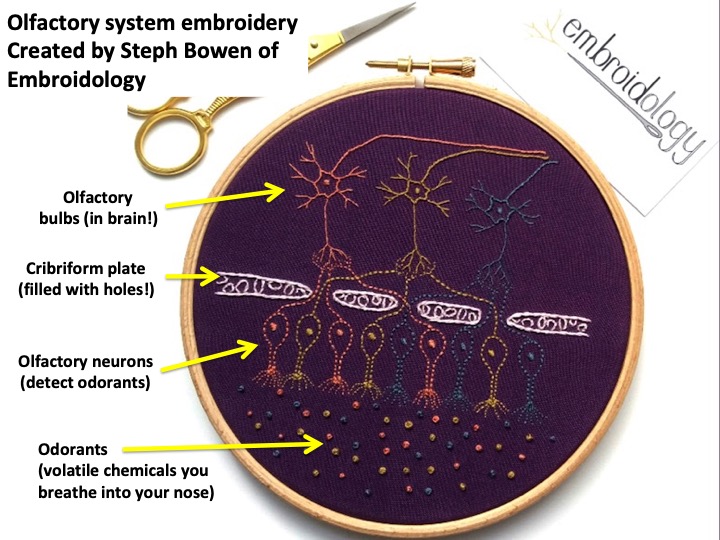
LEARN MORE: Anosmia
The coronavirus can enter through the nose and infect cells in the olfactory epithelium, which can cause a temporary loss of smell. The virus may also access the brain by passing through a thin bone known as the cribriform plate, which is filled with small holes to allow the axons of the olfactory receptors (which form the olfactory nerve (to pass through and synapse with neurons in the brain’s olfactory bulbs.
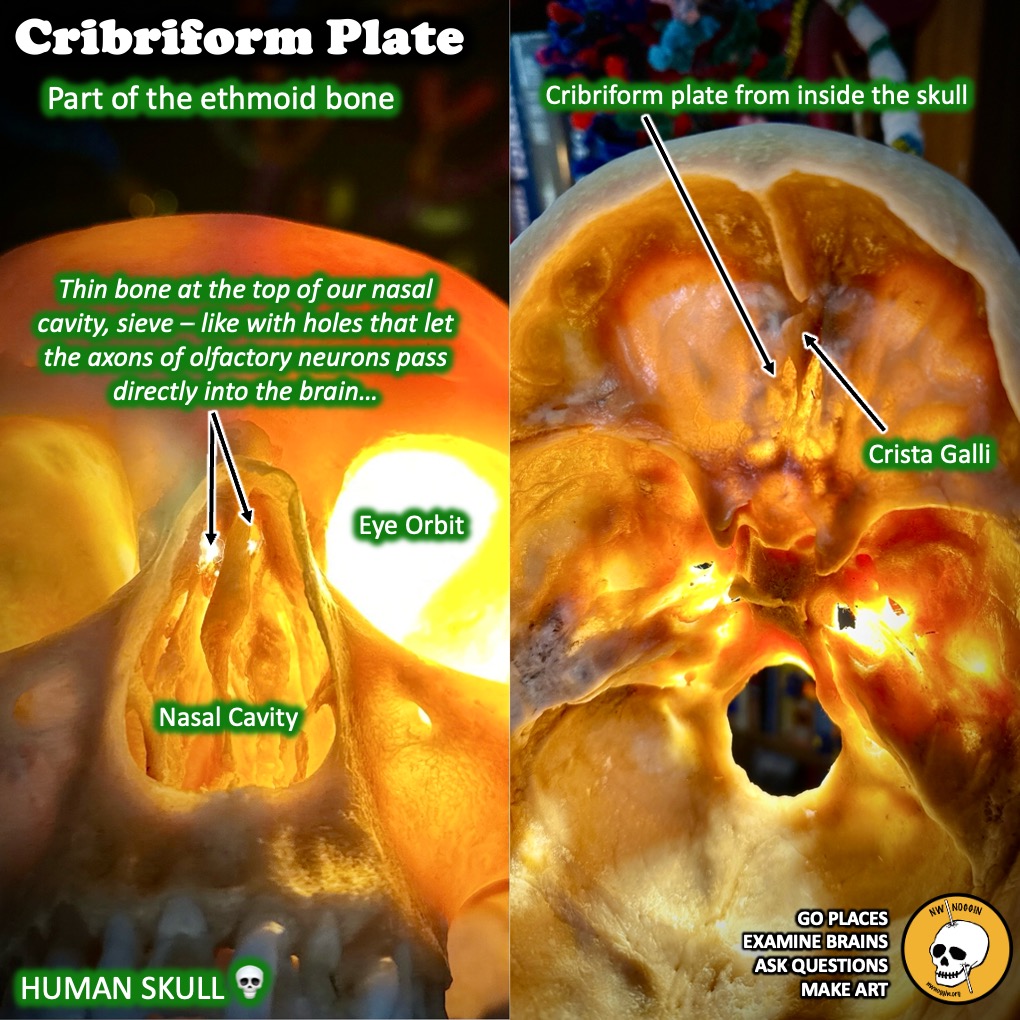
COVID enters cells by using its spike proteins to bind to angiotensin-converting enzyme 2 (ACE 2) receptors. ACE-2 receptors are not found on olfactory neurons that detect odorant chemicals, but they are present on endothelial cells in the lining of your nasal cavity. The damage and inflammation the infection causes is linked to that loss of smell, potentially through several mechanisms.

LEARN MORE: Mechanism Revealed Behind Loss of Smell with COVID-19
LEARN MORE: Non-cell-autonomous disruption of nuclear architecture as a potential cause of COVID-19-induced anosmia
LEARN MORE: What is the ACE2 receptor?
COVID impact on K-12
When COVID first became prevalent there was a dramatic reduction of student engagement and attendance, and thus K-12 students acquired minimal academic knowledge or skills. There was also incredible inequity, including a lack of adequate or affordable technology access in many homes. Emotionally there was a feeling of disconnection between students and teachers.
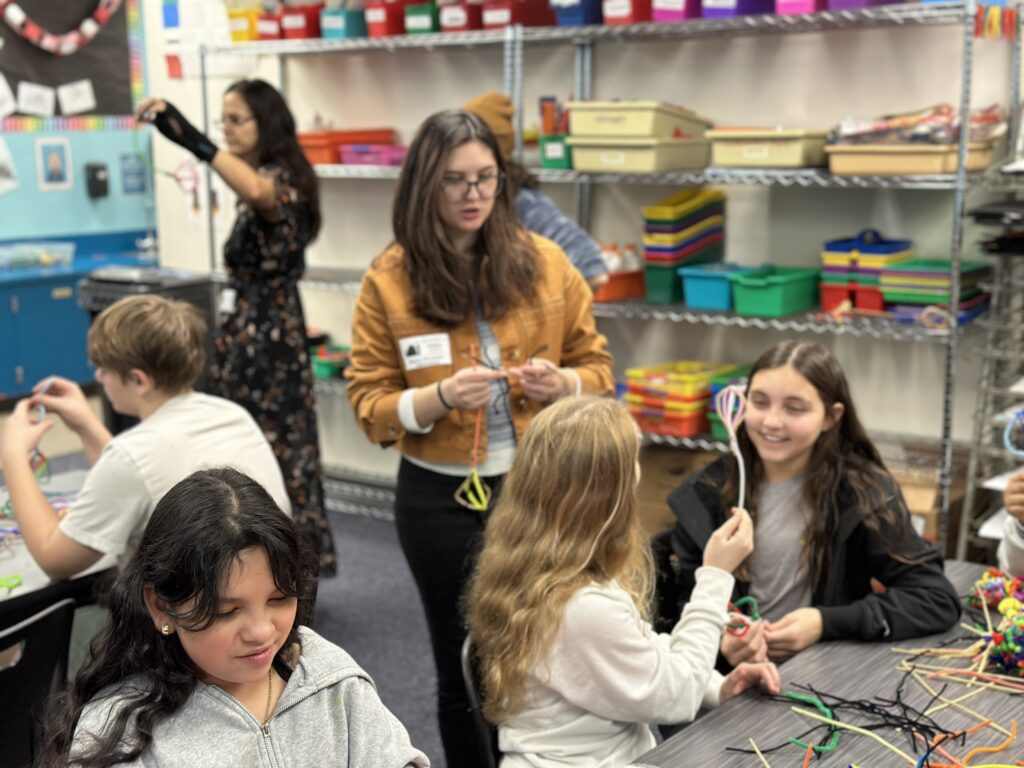
“Wealth and education establish a cycle of intergenerational inequality. Wealthier households can provide more educational opportunities for their children, who then will have more chances to build wealth for themselves. The digital divide may have emerged as a key reinforcing mechanism of education through wealth and of future wealth through education during the pandemic.”
― Dania V Francis and Christian E Weller
The pandemic disrupted education and caused a spread of what researchers term ‘test pollution,’ a downward shift in test scores not related to content knowledge. The downward shift is due instead to increased stress and anxiety, inadequate test preparation, lower socioeconomic conditions and other factors exacerbated by the sudden move to online learning forced by the pandemic.
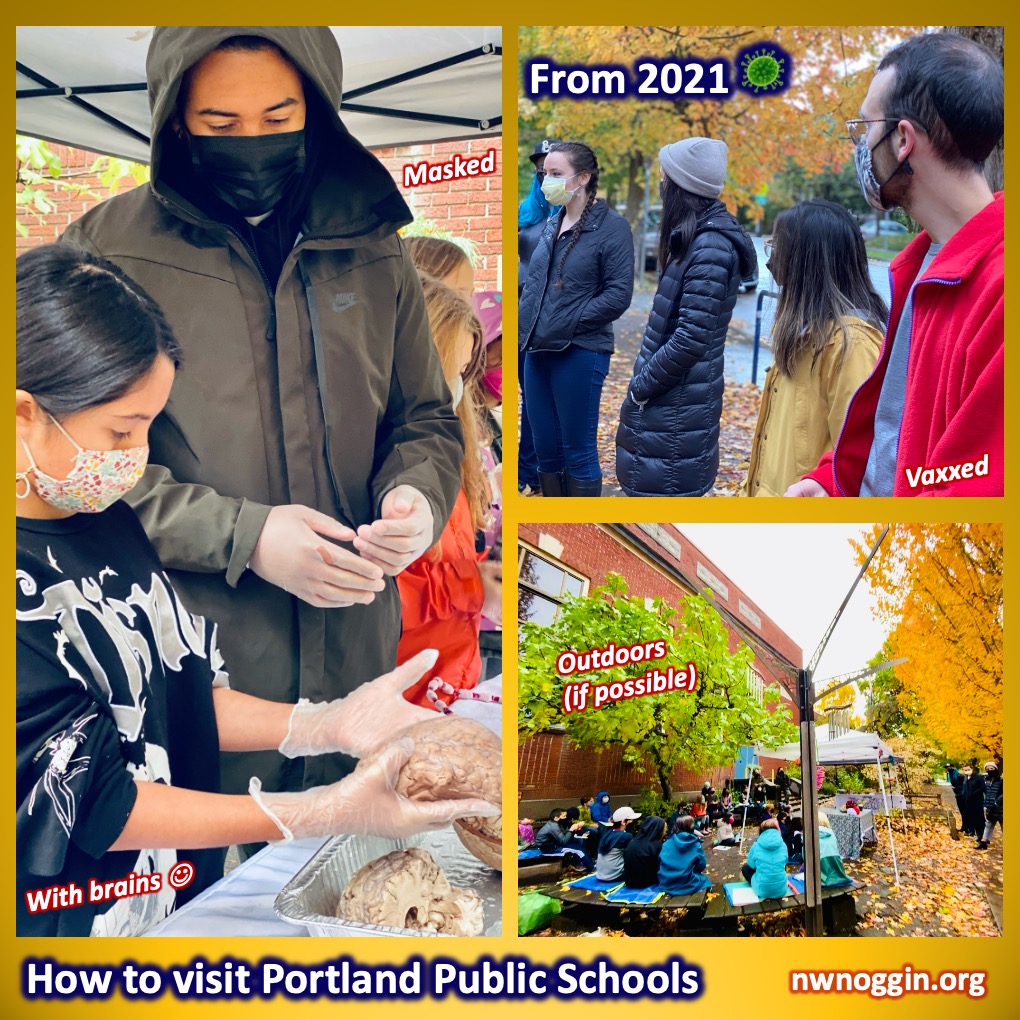
The abrupt move to online learning made it difficult for students and teachers because they both were unprepared. Loss of learning occurred as students struggled with engagement, attendance and access to resources. This worsened mental health challenges including isolation, anxiety and depression. The pandemic widened achievement gaps and made necessary accommodations (for example, student Individualized Education Plans (or IEPs)) much harder to provide.
Post-pandemic, teachers have now in many cases adapted to using technology, allowing for more independent work and small group activities and less lecturing. Teachers have also adjusted expectations because of student emotional and academic difficulties.
It’s estimated that in grades 3-8 students have lost about half a year of learning in math proficiency and a quarter of a year in reading. This is something schools are still trying to make up since many students remain far behind. According to some researchers, if these educational consequences are not addressed, long-term effects could potentially cost the U.S. economy trillions of dollars.
LEARN MORE: The Challenges of Remote K-12 Education during the COVID-19 Pandemic: Differences by Grade Level
LEARN MORE: Economic Inequality, the Digital Divide, and Remote Learning During COVID-19
LEARN MORE: The Longer‐Term Impact of COVID‐19 on K–12 Student Learning and Assessment
LEARN MORE: Disconnected in a pandemic: COVID-19 outcomes and the digital divide in the United States
LEARN MORE: Pandemic Learning Loss and COVID-19: Education Impacts
LEARN MORE: New Data Show How the Pandemic Affected Learning Across Whole Communities
LEARN MORE: The Psychology of Educational Measurement
LEARN MORE: Reduction in school individualized education program (IEP) services during the COVID-19 pandemic
What were classes like before COVID, during and after?
This fall I went to several public schools to teach about neuroscience.

At each school, we set up a variety of stations including brain cell building with pipe cleaners, touching real human brains, comparing differences in animal brains to humans, looking at different cell models and so much more. This is all under the umbrella of Northwest Noggin, a nonprofit organization founded by my professors that brings volunteers to schools and communities to share knowledge about the brain and enhance public contributions to and understanding of neuroscience. This is also where I had the opportunity to interview teachers about COVID and the impact it had on them and their students.
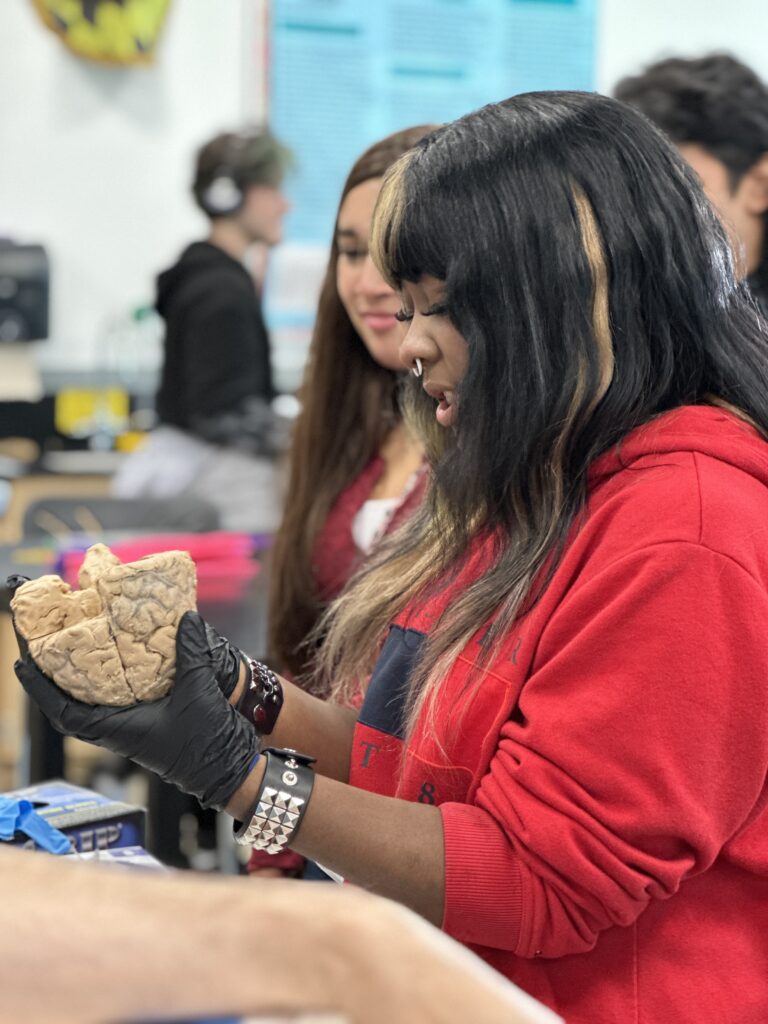
According to several teachers, during COVID students had more freedom to get up from the computer and use the restroom whenever they wanted without needing to ask. Kindergartners in 2020 had space to move and be more self indulgent in play rather than starting to learn self discipline and spatial awareness for peers and others around them. There were also many unique, individual challenges, as children found themselves participating from widely varied home circumstances, without the chance to learn together in a shared classroom environment.
“‘We’re all in the same boat’ they say
But I would disagree
So many different sailing crafts
Upon this stormy sea”
– Julie Sheldon
LEARN MORE: The Same Boat by Julie Sheldon
Teachers told me that they expect a smaller impact of COVID when it comes to developmental and school achievements for kids in third grade or lower. One teacher, Miss Jones, observed that “the new third graders who weren’t impacted by COVID don’t seem to have these problems.” However, since the pandemic made the older students fall behind, some teachers have felt pressure to to be more harsh with them since they are required to pack in so much more material to get them up to speed.
How did online learning impact students?
According to teachers, students have been impacted by online learning in their socialization and self awareness. They don’t have very good writing skills and they often lack classroom manners like raising hands or asking to use the restroom. A plus is that students are way more tech savvy than before.
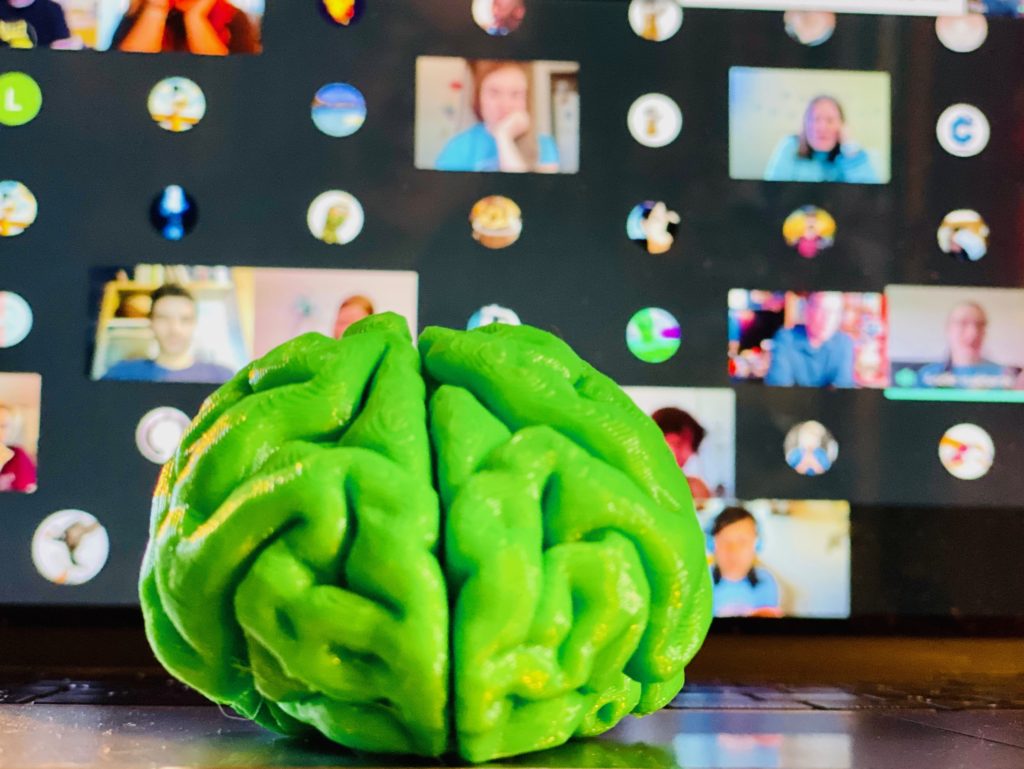
Resources and how to stay safe

We must remember that COVID is still around and has impacted us greatly.
It’s still a potentially deadly disease that we must be cautious of. Through outreach I’ve learned about COVID on a molecular level. I also had the opportunity to talk with teachers at various public schools. These conversations helped me better understand the social effects of COVID on young people and the impact and change that teachers have observed.
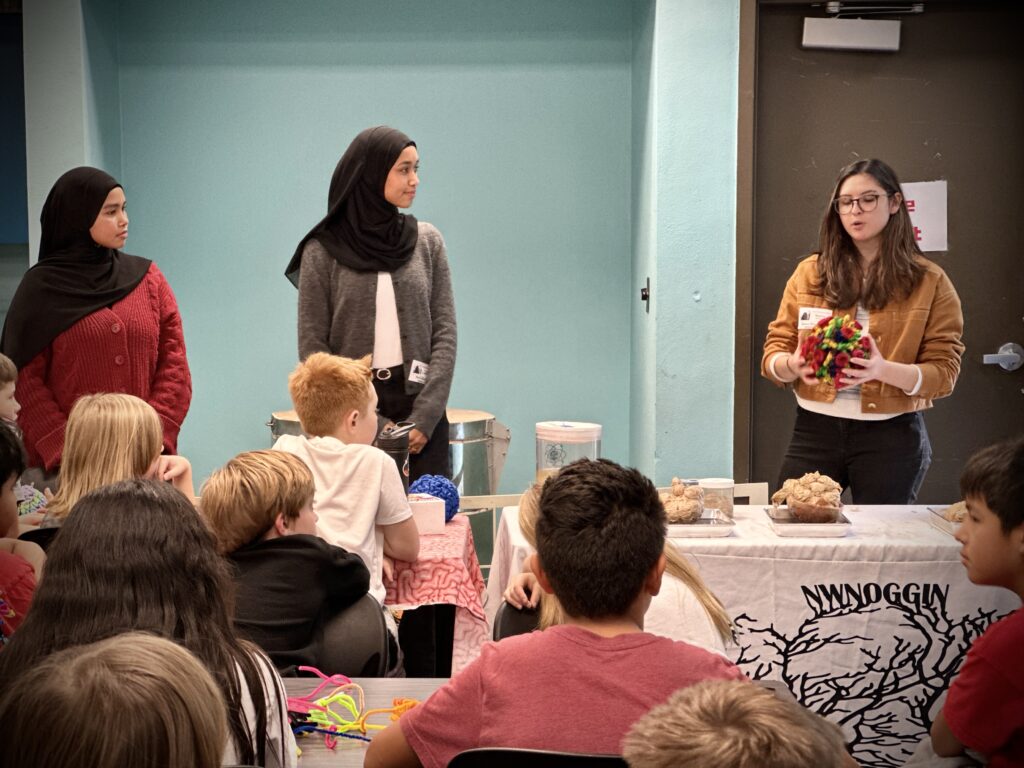
REMEMBER (as of 12/2024): COVID vaccines are STILL FREE for everyone in Oregon.
No proof of identification or anything else other than making an appointment with your nearest pharmacist is required. The appointment is also free.
LEARN MORE: COVID-19 vaccine information
LEARN MORE: FREE (for now, as of 11/2024) Coronavirus (COVID-19) Testing
LEARN MORE: Getting Vaccines in Oregon



